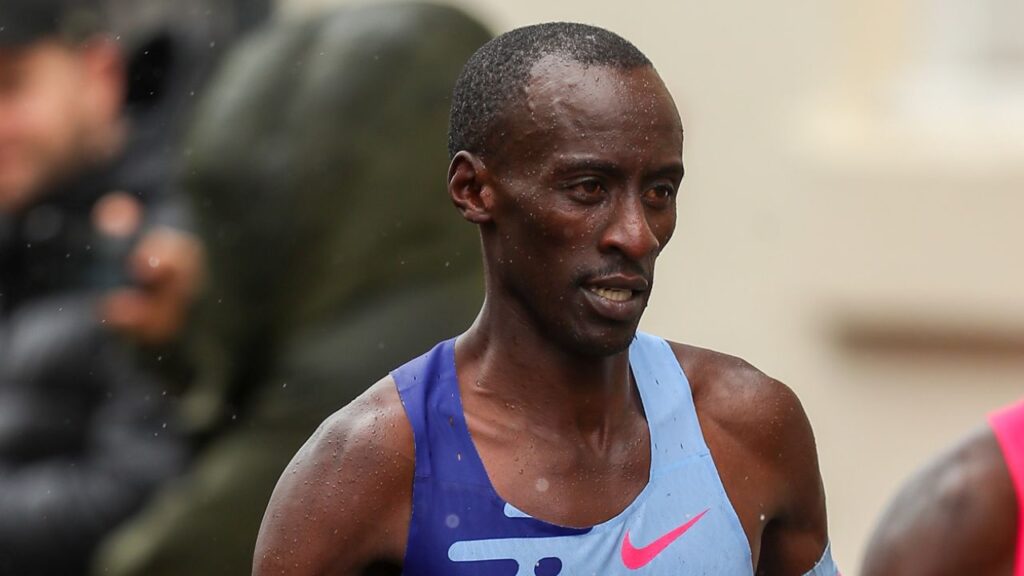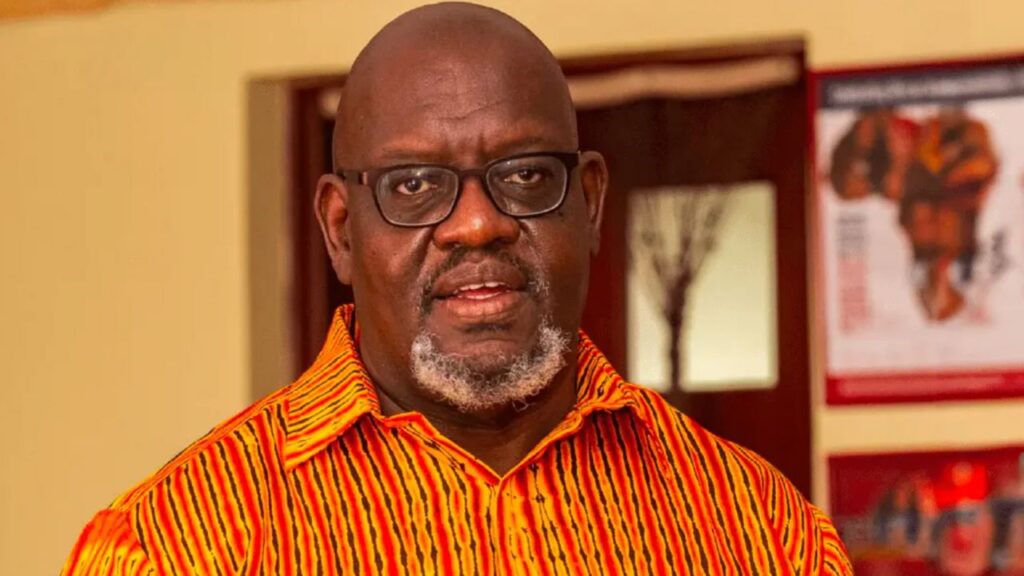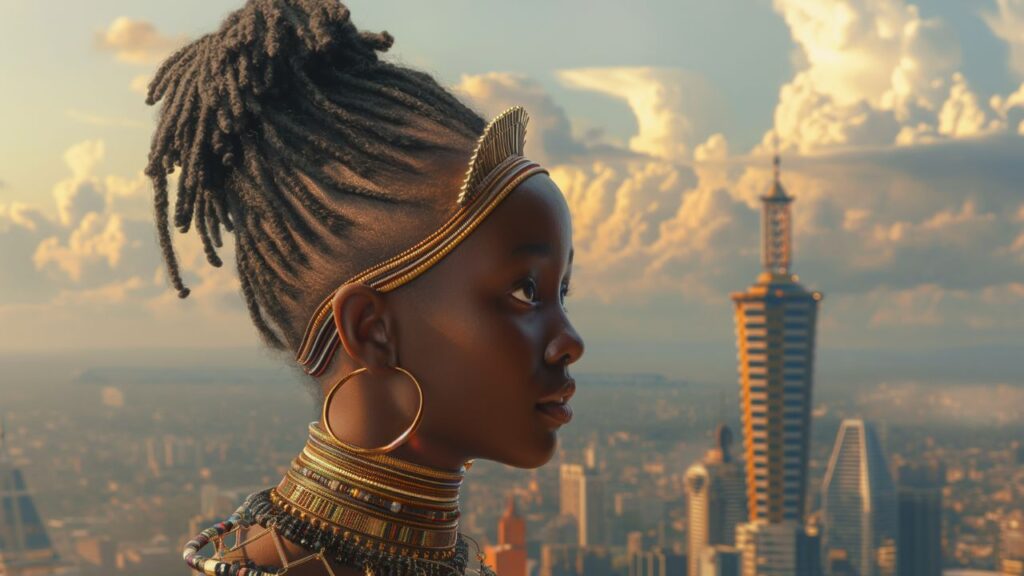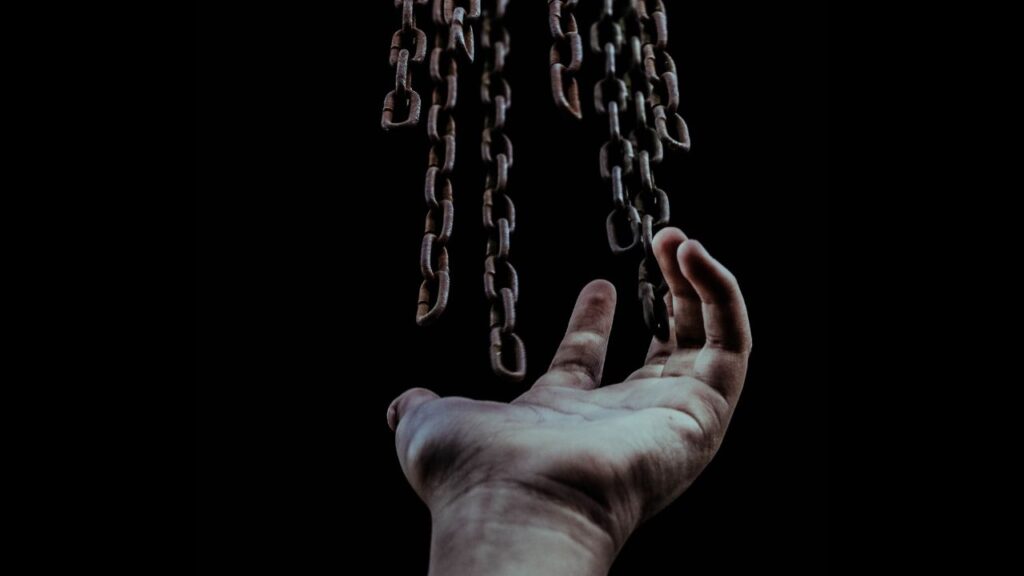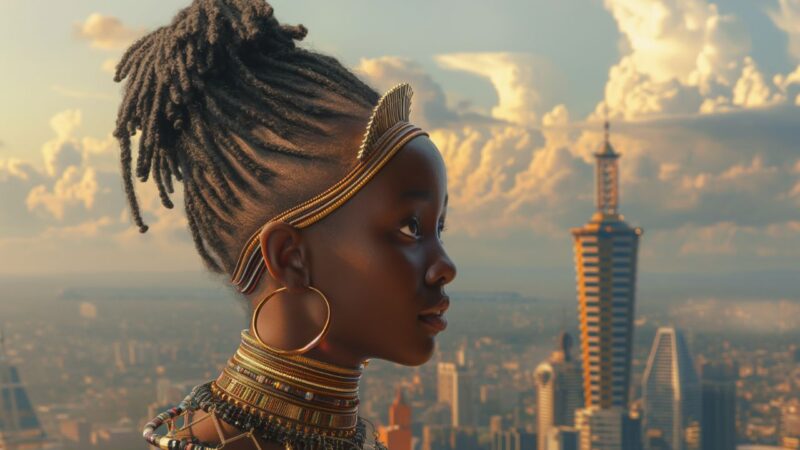I was born in March of 1989, just two years before the term millennial was coined by William Strauss and Neil Howe in 1991, three years before Bill Clinton, the neoliberal icon, took over the most powerful presidency on earth and right on the throes of agitation for a multiparty democracy in Kenya.
I was shipped off to boarding school at 11 years which meant I became a young, distant observer to the events and transitions of life both at the family, and national level including the rise of rural modernity in the early 2000s, inspired by the power of the motorbike, the money transfer platform MPESA, and the changing political dynamics.
One midmorning in late August 1996, then a lower primary school kid at Kitale Union Primary School, I had my premature induction into the murky world of Kenyan politics via the hordes of retrenched industrial workers huddled in small groups, whispering, biting their lower lips, most of them looking over their shoulders.
Kitale town, then, was simply a one-main-street, end-of-the-rail town taped together by two dozen (mostly Indian owned) shops, several colonial era schools, the selfless public housing and the imposing structures of the traditional mainline churches like AIC, Roman Catholic, and PCEA. In the subsequent years, after the massive retrenchment, the once promising town sunk into a decaying ghost as the basic economic sustenance of the town; the parastatals like KCC ( Kenya Co-operative Creameries), NCPB (National Cereals and Produce Board), Kenya Seed and the large scale ADC (Agricultural Development Complexes) were downsized, collapsed or privatized thanks to the infamous Structural Adjustment program(SAP).
In one major swoop, the corporations that held the town together had been massively shaken, irrevocably altering the socioeconomic soul of the town. World Bank, IMF and other catchphrases that either I cannot recall or could not comprehend then, peppered their conversations. But what set the narrative on a new lane was a conversation one evening between my mom and my uncle, Barnabas. On and on, they would list the names of friends and family who had lost their sustenance due to the economic and political mess. Then, my uncle offhandedly said, ‘huyu jamaa ameharibu maneno’ in reference to a certain powerful politician. My then young, blissful, unthinking mind parroted back.’ Huyo ni mbaya.’ Their reaction was swift and unnerving. Even as a kid, the angst in their adult eyes was something they could not for a moment hide from me.
My then young mind could not wrap itself around the complex issues and the layers of emotions that defined the perils of the time. It must have been flinching for them to hear the spirit of the time parroted by a young soul and stripped of the euphemisms, artificiality and colloquiallity of adult conversation. What was however clear, was that I had mentioned something that for reasons I could not understand then I was not supposed to have uttered.
The 2003 euphoria found me, then a spry young 14 years old high school student, in the throes of what would have this country ranked as having one of the most optimistic citizenry in the world. The Kibaki regime, coming in at the tail end of the Moi regime to upstage Moi’s choice of a young-barely known-son of the first president, was a political earthquake unlikely to be recreated ever again.
Unfortunately, this high noon of political bliss would fizzle out fast, as the coalition would soon run into organizational trouble just after the demise of the then Vice President, Kijana Wamalwa who till then remained the most powerful politician from my hometown, Kitale. Kibaki would dishonour the NARC MoU as he increasingly retreated to his ethnic corner and darkened his legacy by resuscitating the Mt. Kenya Mafia. These MKM who had been torpedoed by Njonjo in 1978 when he gave Moi the presidency found a new lease of life in Kibaki post-2003 presidency.
Their primitive accumulation of wealth, ethnic superiority complex and contempt for anyone not from the slopes of Mt. Kenya is a terrible legacy that should have never been allowed to return into our national discourse. Unfortunately, ideological privilege combined with a siege mentality of their supporters had allowed them to establish a mal-adaptive ethno-supremacist regime. By the time the 2005 referendum came around, they had established an us-vs-them narrative and Uthamakism made its way back into our lexicon and corridors of power.
I have always been clear that Uthamakism is a monarchical structure that operates as gangland style territorialism primarily through state capture, ethnic bigotry, as well as tentacle and skewed economic interests. At this point, their self-interest is so intertwined with the state’s interests that it is virtually impossible to oust them. This Uthamakism is the Kenyan version of deep state that will always be more than willing to subvert democracy when it goes against their interests, biases, and preferences.
Even the next major political event in Kenya-the 2010 Constitution inauguration-could not pack enough patriotic punch to inspire a deeply frayed nation whose conscience had further been burdened by the 2007 skirmishes that intensely tore apart the illusion of the island of peace long peddled through the 90s.
I left campus in 2012 and joined the job market right at the tail end of the Kibakinomics economic upswing. The boom-a combination of higher education boom, real estate, banking, telecoms, money transfer and the revolutionary motorbikes- had for a moment set this nation on a path to seeming prosperity. In retrospect it did not occur to me just how bad the labor market was, given that I would land my first job 4 months after leaving campus. My fellow millennials have fared-and continue to fare-worse than I could imagine. Like everyone else in my generation, thanks to a confluence of forces-some decades in the making, we (millennials) are now facing the scariest financial future of any generation and just like my peers, I am finding it increasingly difficult not to be scared about the future, anxious about the present, and angry at the failings of the older generations.
I am 29 years old, a middle millennial if you will-and for the last five years since I left campus- a period in which I have been a staffer in a modern, centre-right church, ran a couple of creative gigs, written two books, and reinvented myself as a public scholar and a commercial writer-the labour market has continued to worsen to a full blown crisis.
In those six years, I’ve been waiting to start adulting, just like my father did, yet unlike him as I stare at the proverbial third floor I am increasingly aware of the power of societal outcomes to shape personal fortune especially as regards the five markers of adulting. As a millennial I have well-founded respect for context even as I weigh myself against him, who at my current age, 29 years, bore me as his 3rd child, besides having just bought a plot of land and had already risen to the rank of an acting head teacher.
Millennials, unless otherwise stated, is a term that refers to anyone born between 1982 and 2004 and if editorials are anything to go by, then we are considered a disappointment. We have all heard the narrative, millennials are entitled, tech savvy, easily bored, flighty and have failed in the five common markers of adulting – finishing school, getting a job, marrying, raising a family and saving for the future. Honestly in these five benchmarks I have got a mixed score and occasionally I’ve marinated in private shame thanks to the pervasive myth of personal effort alone in shaping life outcomes as peddled by the prosperity gospel on the religious side and the secularist positive thinking movement on the other hand.
The millennial bashing script often reads like capitalism’s disappointment that we did not turn into the reckless consumer cluster that they anticipated we will be when they branded us in 1991. The millennial narrative-for the most part-ignores the existential pain of being young in a flailing society, and the attendant youthful anxiety, grief, struggle and fears while amplifying the trivial and dehumanizing aspects of generational clustering such as tastes, habits and preferences.
Unfortunately these generalizations, just like those of any other generational group fails to account for wide variations in individual and group-wide dynamics. Being a millennial also means having to constantly remind Gen X and Boomers that contrary to clichés about us, a vast majority of our peers have not gone to university, do not get paying gigs regularly, and cannot depend on our folks. Only a tiny minority fit these peddled stereotypes.
What defines us is not Java Cafe, Instagram, or any sense of entitlement. It’s UNCERTAINTY.
What is a Generation?
The assumption inherent in my reflections here is that a generation is mostly defined by biological comradeship built on small age variations. However in ‘the problem of generations’ sociologist Karl Mannheim, in 1927, pointed out that a generation is something like a social class: an objective, structuring social fact. If the objective aspects of class were economic, those of generations were biological. However mere biological coincidences are not enough to form a generation. A certain age cluster born around the same time only becomes a generation when they develop an actual peer bond thanks to a specific political, moral, spiritual, economic, geographical or social event that knits them together into largely observable mind-sets and worldviews.
Within such contextualization, I would then say that the Kenyan Gen X (45-60) only acted as a generation between 1990-2002 when the SAPS united them in sedative leisure of booze, longing for emigration abroad, sex and despondency. However such a short span of generation formation (whose effects were mitigated by the helicopter nation-state parenting of Kenya by the United States through Bretton Woods institutions) wasn’t enough to forment a generational bond. By the year 2000 as the economic boom kicked in, the 90s kids went separate ways and their process of generation formation got torpedoed. That is why many of them, drunken with hyper-individualism and failure to think generationally, are busy screwing the economy through privatization and the neoliberal onslaught.
For we millennials, our ‘generation formation’, is taking place in the crucible of a flailing global finance at the end of capitalism as we’ve known it, a period that has us trapped in eternal adultescence in which we are no longer kids and neither do we fully possess the social markers of adulthood. And the circumstances we live in are direr than most people realize. All around us the social safety nets-education, housing, and health care-have now become financially unattainable even as the paths to respectable financial existence are becoming expensive, illegal or hoarded.
For we millennials, there are many living in poverty and struggle even as more are at risk of falling into despair. This is why nations invent welfare plans and firm-up their social safety nets. In healthy, functional societies, quality, affordable public social services such as water, sanitation, security, healthcare, and education are considered human rights not mere market products. They are supposed to be the paths that can help kids, irrespective of their circumstance of birth to transcend family status and become upwardly mobile.
The first inkling that we are living in the ‘new 90s’ defined by stagnating economy, stunted growth and rampant corruption would come a few months after I quit my first job as a church staffer, at the tail end of 2014. Most of the vacancy applications that I sent out would go unresponded to even without a mere ‘well received’ feedback. And the statistics were there to back me up-albeit 3 years later. According to a December 2017 job report, 53% of those polled were unemployed, with 86% of the unemployed being between 18-34 years. The job market is depressing and despite all this talk about the internet revolution and gigs, if nothing changes, my generation will walk into our 40 and 50s with a career consisting of a long list of unrelated low-skilled, low-wage, short-term, temp jobs, living financially insecure lives and not qualified for any job particular. It is no longer strange to hear of those who have not landed a job, three even five years, after leaving campus.
Around the same period, that the report was released I ran a viral Twitter thread dubbed #UnemploymetDisasterKe that garnered 736k impressions within 9 days. Employers would write to me in private about how they no longer advertise the vacancies because of the massive deluge of CVs that would come in. One employer mentioned how he got 2045 CVs for 15 positions while another mentioned receiving 711 CVs for 7 clerical positions. It’s a numbers game and there just aren’t enough quality jobs for millennials out here.
When it comes to schooling, currently, barely 10% of those who finish high school are able to join tertiary institutions. This means roughly half a million Kenyans wind up in the job market, young, inexperienced and not properly schooled. Meanwhile, an estimated 900 000 Kenyans turn 18 years every year. Tragically, the current fascist regime is well invested in destroying the already bust education economy, a mess reflected in the fact that university enrolment has dropped by a third in 2018.
Meanwhile, at the workplaces around the country, the scourge of managerialism that treats supervisory and management skills as superior and thus better remunerated than technical skills has dis-incentivized millennials from joining -Technical, Vocational and Education and Training (TVET) institutions in favour of the funneled University education.
Quality education, one of the most viable social safety nets for the poor, has been yanked and compromised, privatized and priced out of reach of many in the society. This generation not only has to deal with a failing labour market, they are in turn walking into the future as largely uneducated-in a society in which education is a strong predictor of good incomes.
To be a millennial in this country is to be acquainted with lack, plagued by economic insecurity, and to be eternally haunted by the prospects of poverty and as Michael Hobbes, a millennial writer opines, becoming poor is not an event. It is a process. Like a plane crash, poverty is rarely caused by one thing going wrong. Usually, it is a series of misfortunes—a job loss, then a car accident, then an eviction—that interact and compound.
One aspect of millennial life that we rarely look into is just how much it matters what accidental advantages one accumulates at birth i.e. postcode lottery. The underlying force is the ever ignored role of inherited (dis)advantages in which, being born into a stable, well-to-do family avails certain nutritional, economic, financial, and academic advantages that gives you a leg up in the race of life. It is the nature of life dynamics that in a tough economy with dwindling opportunities, children born into abundance or as Warren Buffet calls them ‘the lucky sperm club’ have a surer head start than ever.
Add the current rigged economy, unbelievable corruption and the floundering nation-state, and there’s no doubt that we are walking into a period where, while there still exists accelerating advantages for the upper class millennials, the middle class millennials have a tricky dance with fate and risk downward mobility, while the poor millennials have to face the reality of compounding disadvantages.
To have an undergraduate degree in this country, at this point, means to be among the 700, 000 degreed Kenyans while a Master’s degree puts you further up in the apex of society given that as of 2014 only 40,173 students enrolled in master’s programmes and 4,394 in PhD courses. Even then a degree does not protect you from the context of entry into adult life, given that it matters in what kind of a public environment you turn into adulthood. Turning into a young adult in the middle of a boom like the 99-2010 upswing avails massive job and investment opportunities, which comes with the potential for saving and accumulation of economic and professional advantages in yours 20s and 30s that often compounds over a lifetime. Conversely, turning into adulthood in post-2012 Kenya-like I did-has meant that the advantages I gained as the son of rural, professional parents in a nominally catholic family at birth were neutralized by the downward swing in the labour market at the throes of adulthood.
The reason, we millennials seem stuck in some sort of extended adolescence is because we are trying to succeed within a system that no longer has all the pipelines that ushered youths into adulthood. The rungs needed to finance an education, get a respectable job with a decent salary, then raise a family have been yanked away, the rules have changed, and now we are left playing a game that is virtually designed to make us lose.
Not only are most of my peers jobless or underemployed, we are getting jobs later, we start earning less money, we are not able to save thanks to sky-high bills, we accumulate more loans from shylocks to stay afloat, buying a home is only possible for a tiny, negligible minority of millennials and unless the current system gives way, few of us millennials will survive the onslaught. Meanwhile, the current regime has added over $20 billion debt burden on our society within 5 years, in the absence of a major crisis like civil war or natural disaster – and with little to show for it, turning us into a multi-decade Creditopolis.
What are our options then? We millennials have legitimate and genuine grievance and methods of expressing displeasure but we have not conjoined the two with an ideology like our peers who run the revolutionary sang culture among Chinese millennials, the Corbyn populism among the UK millennials, Geracao a Rasca among the Portuguese millennials, Juvetud Sin Futuro in Spain and a whole host of other millennial ideological movements around the world who are framing their struggle as class-based and generational.
There are three illusions that prevent many Kenyan millennials from organizing: one, is, this is temporary, we’ll ride it out: two, I’ll prosper and leave all other millennial strugglers behind: three, I’m the only one caught in this mess, so it’s my private shame. Truth is, study after study show you are wrong on the first count, have minimal chances of achieving the second, and you would be surprised how many of us are out here stuck in the third.
Given the skewed, nepotistic, violent, and predatory nature of the current system, the only option left for us Kenyan millennials is to imitate our peers around the world and set in motion a MILLENIAL REVOLUTION otherwise we are toast. And it’s the least we are ENTITLED to.


